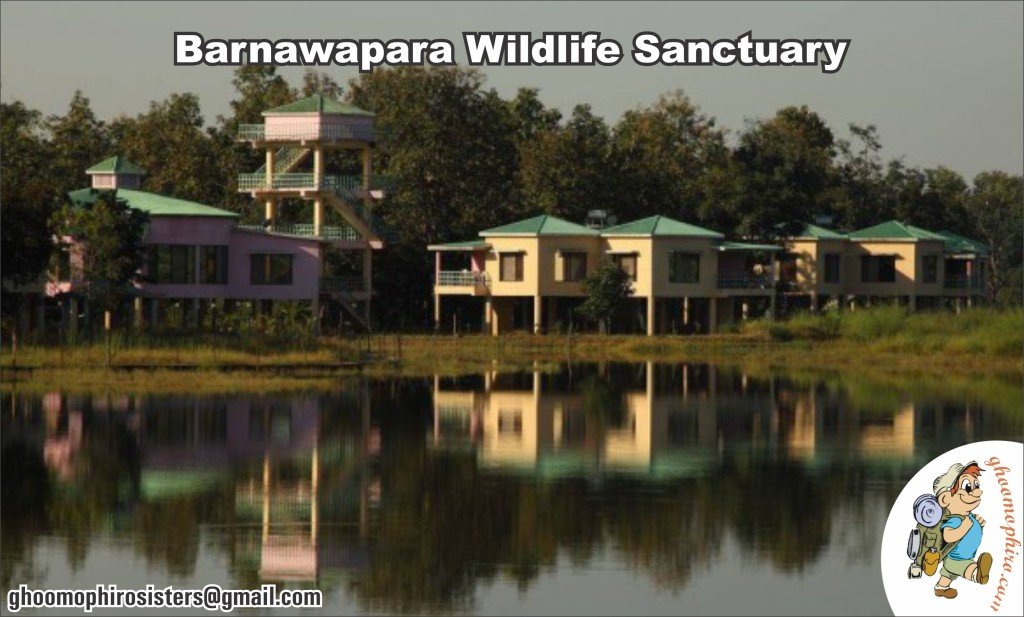Like its tourism tagline, the state of Chhattisgarh in indeed full of surprises. Who would have known that in the heart of India, there is an entire state covered in greenery as much as 41.33%? And did you know that the oldest ethnic tribes of India form 70% of Chhattisgarh’s population? From the largest waterfall of India to the ancient natural caves, Chhattisgarh is fascinating in its every corner.
Rich wildlife
Of all its natural bounties, the biodiversity of Chattisgarh is the most pervasive and prominent. There are three national parks and 11 wildlife sanctuaries across the state that are home to some of the rarest and most endangered species of wild animals found in India. The most-visited ones are the Barnawapara, Sitanadi, and Udanti. All three parks are easily accessible from Raipur- the nearest and the biggest city in Chhattisgarh.
Barnawapara Wildlife Sanctuary– 128 Km from Raipur and takes about 2.5 hours via NH 53. You can opt for one of the airport cabs in Raipur and reach the park. Barnawapara is known for antelopes, hyenas, Chinkara, Barking Deer, Bison, and wild buffaloes- the state animal.
Sitanadi Wildlife Sanctuary– This is another half an hour drive from Barnawapara. One of the densest forests of India, the Sitanadi wildlife reserve is packed with clusters of Sal, teak, and bamboo, housing a considerable number of herbivores and carnivores like tigers, leopards and jackals, black buck, Sambar, Nilgai, Gaur, and various species of monkeys and birds.
Udanti Wildlife Sanctuary– This reserve forest is the farthest from Raipur at 172 Km and it is better to find a taxi service in Raipur itself to reach Udanti. Spanning 232 sq. km, this natural sanctuary is known for its herbivore population known for its herbivorous population of bison, Barking Deer, Gaur, Sambar, Chital, Four-horned Antelopes, and Chinkara,
Fascinating waterfalls
The rocky terrain of the Vindhya and Satpura mountain ranges dominate the horizon of Chhattisgarh, giving rise to some of the most rapid cascades that one can find.
Chitrakoot Falls– The largest (in breadth) waterfall in the country, the Chitrakoot Falls are also called the Niagara of India because of its horseshoe shape like the Niagara Falls. The waterfalls are fed by the Indravati River and monsoon rains, which drop down from a height of 95 feet, resulting in a torrential flow. You can take a boat ride at the bottom of the falls and watch the rainbow formed by the mist of the water along the edges.
Tirathgarh Falls– This waterfall on the Mugabahar River form a step-like structure, where the water cascades down blocks of rocks from a height of 300 feet. It is surrounded by dense forests and an old temple dedicated to Lord Shiva and Goddess Parvati, which attract pilgrims. That is how the waterfall got its name.
The Amritdhara Falls and the Rajpuri Falls are also noteworthy and call for a day trip to experience their magic.
A peek into the culture of Chhattisgarh
A majority of the state’s population comprise ethnic tribes like the Gond, Abhuj Maria, among many others. Their life, aesthetics, and traditional practices form the foundation of the colorful and vibrant culture of Chhattishgarh. The most intriguing aspect of these tribes is their warm hospitality and their skilled craftsmanship reflected in the exquisite regional handiwork.
You can also buy fabrics, terracotta figurines, handcrafted bamboo and wood products, jewelry made of cowries, bell metal (Dokra), copper, and bronze, to support these communities and take home a piece of their culture. You can also join the local festivals and see them in their most lively form. They celebrate Goncha, Dantewada fair, Champaran Mela, Hareli – the harvest festival, and the popular Rajim Lochan Mahotsav. Women adorn themselves with leaves, wildflowers, and ornaments made of bones, shells, and locally sourced metals and perform traditional dances like Raut Nacha, Panthi, Karma, Pandwani, and Soowa.
With the rugged yet intriguing landscape, the breathtaking biodiversity, and a culture that is unique to the common man, Chattisgarh never ceases to fascinate and that is why it deserves to be on every traveler’s wishlist!
